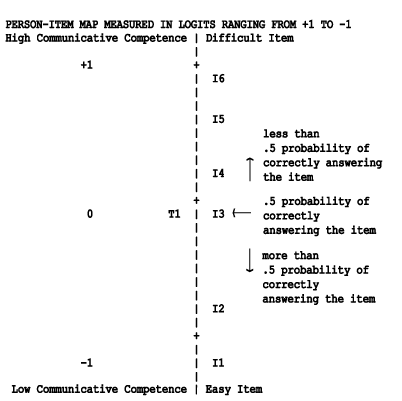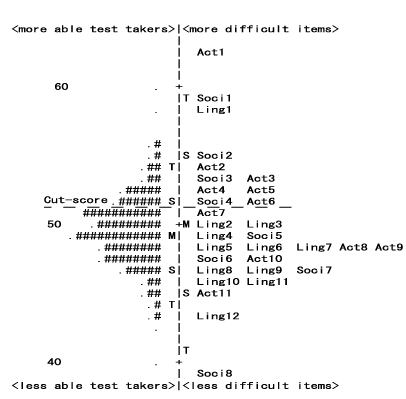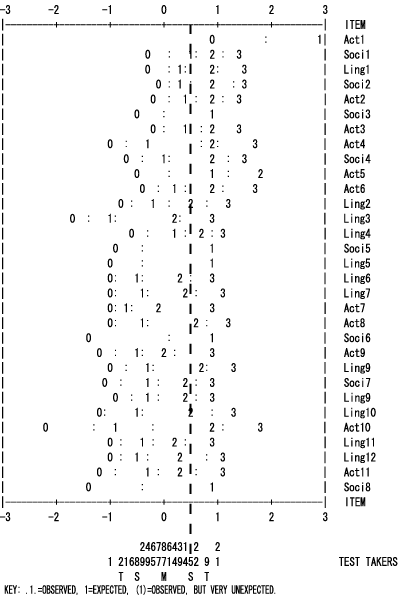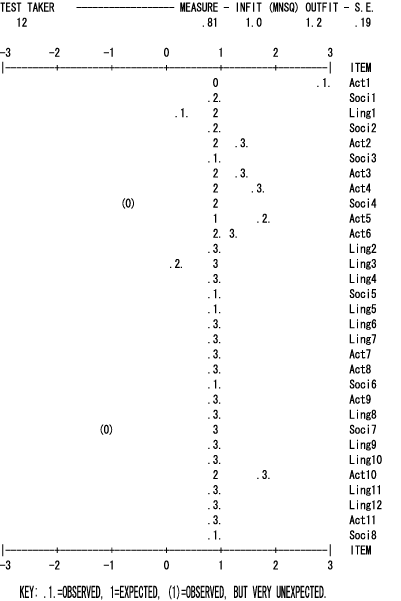|

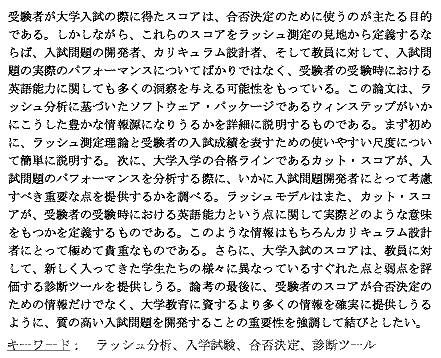
Abstract
The scores that test takers achieve on entrance examinations are primarily used for admission decisions. However, if these scores are viewed from a Rasch measurement perspective, they can provide examination developers, curriculum designers, and teachers with numerous insights concerning test takers' current level of knowledge as well as the actual performance of the examination. This paper provides a detailed account how Winsteps, a Rasch-based software package, can provide this rich source of information. It begins with a brief explanation of Rasch measurement theory and the use of a user-friendly scale to report test takers' results on an entrance examination. Then the paper examines how the cut-score for admissions provides an important reference point to analyze examination performance. The Rasch model also defines what the cut-score actually means in terms of test takers' knowledge of a given domain. This information is very valuable for curriculum designers and can provide teachers with a diagnostic tool to assess students' diverse strengths and weaknesses. The paper closes by stressing the importance of developing quality entrance examination items in order to ensure that the test takers' scores can inform more than admission decisions.
Keywords:
Rasch theory, entrance exams, admissions decisions, test impact
|

